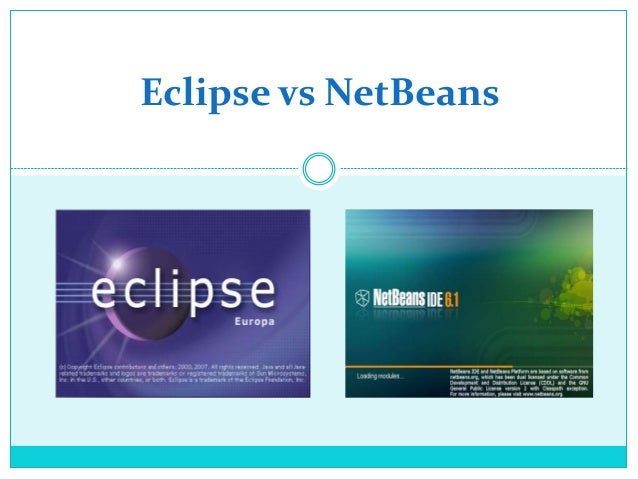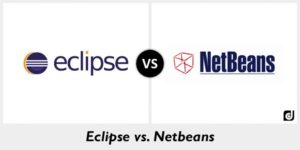

- #Eclipse vs netbeans install#
- #Eclipse vs netbeans full#
- #Eclipse vs netbeans code#
- #Eclipse vs netbeans Pc#
I’ve found NetBeans code quality checks support better than the one available in Eclipse Kepler + FindBugs plugin. In addition, NetBeans includes first class support for FindBugs which, again, helps me during coding sessions. NetBeans Java hints is a very reach set of the code checks which helps me to avoid stupid errors and keep high the quality of my work. While coding, it is important to have feedbacks from the IDE about the quality of the code and possible errors. If you don’t believe me, have a look at this 2008 bug still open: and its related bugs.
#Eclipse vs netbeans install#
See here for a small tutorial.īut even if you install a test support plugin like MoreUnit, still an important Eclipse limitation remains : the possibility to have a dir for test files separated from the main src dir, which is an essential feature to let us handling deployments. I’m using MoreUnit plugin which is quite nice and add many missing features to Eclipse.

In NetBeans there is complete native jUnit and TestNG support (templates, test runs, jump to test option in the editor, both *Test and *IT files support) which I found very useful and efficient.Įclipse native support is poor but of course it can be extended via plugin. I cannot imagine any real EE developers which does not need any kind of test support from the IDE.
#Eclipse vs netbeans full#
Why, in 2014, an IDE for Java EE developers does not include full testing support ? If you install Findbugs and PMD plugins, Eclipse becomes really slow. I don’t have benchmarks to demonstrate my feeling but now my coding is visibly faster with NetBeans 8.0 than with Eclipse Kepler. Five years ago, when I moved from Galileo to NetBeans I really missed Eclipse speed: coding, windowing, compilation, everything were significantly faster in Eclipse.
#Eclipse vs netbeans Pc#
Now let me compare them again, Eclipse Kepler 4.3 vs NetBeans 8.0, on same project (a big ant based web project) and on the same PC (Win7 64bit 4G RAM). So, I was not really happy when the project moved to NetBeans (because of its Swing support).

I have already used Eclipse some years ago and, at that time (2009), Eclipse Galileo were quite superior to NetBeans 6.x: faster, rich of code hints and warnings, full of useful plugins. Of course, I’m also using NetBeans 8.0 for some activities like, for example, legacy code test coding. It provides a standalone C/C++ debugger application that is added to the CDT to help debug an application via the command line and have an Eclipse UI debugger pop up.In my current project, Eclipse Kepler has been selected by the customer as the preferred IDE for all main tasks. EcoreTools, the graphical modeler for Ecore, has been completely re-implemented based on Sirius and provides a nicer graphical design, support for documenting your model, specifying domain constraints and modeling Generic Types. Paho provides open source implementations of open and standard messaging protocols that support current and emerging requirements of M2M integration with Web and Enterprise middleware and applications. The Eclipse workbench provides a new dark theme, split editors, line numbers on by default, reduced whitespace in default presentation, ability to hide the "quick access" bar and fitting syntax highlighter setting for the editor of several programming languages. Eclipse Luna includes official support for Java 8 in the Java development tools, Plug-in Development Tools, Object Teams, Eclipse Communication Framework, Maven integration, Xtext, Xtend, Web Tools Platform, and Memory Analyzer.


 0 kommentar(er)
0 kommentar(er)
